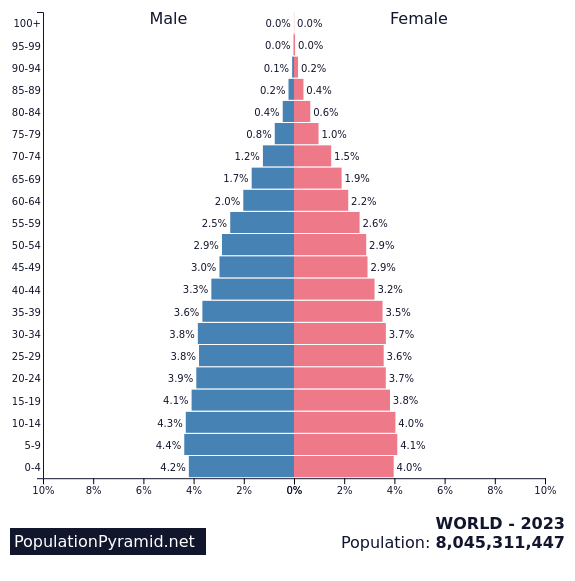Population Pyramids
Today in class, we watched a TED-Ed Youtube video on our laptops on Population Pyramids. We have talked about them before, but this gave a further explanation. Here is a picture of the current (2019) World Population Pyramid:
 Here are the important notes I wrote down when I watched the video:
Here are the important notes I wrote down when I watched the video:
 Here are the important notes I wrote down when I watched the video:
Here are the important notes I wrote down when I watched the video:- A population pyramid is a visual representation which has males and females on opposite sides. It shows population in each five-year age interval. (starts from ages 0-4 and ends on age 100 and up)
- Age intervals are grouped together into pre-reproductive (ages 0-14), reproductive (15-44), and post-reproductive (ages 45 and up).
- Population pyramids can be very useful when predicting future population trends. You can predict whether a country's population will increase or not.
- Demographic transition- when a country moves from a pre-industrial society to one with an industrial or post-industrial economy.
- Countries that have only recently begun the process of industrialization typically see an increase in life expectancy, and a decrease in child mortality as a result of improvements in medicine, sanitation, and food supply.
- A fall in birth rates can be because of increased education and opportunities for women outside of child-rearing. It can also be caused by a move from rural to urban living.
- Countries in advanced stages of industrialization can reach a point where both birth rates and death rates are low, and the population remains stable, or even begins to decline.
- A population pyramid can be useful as a record of the country's past.
Comments
Post a Comment